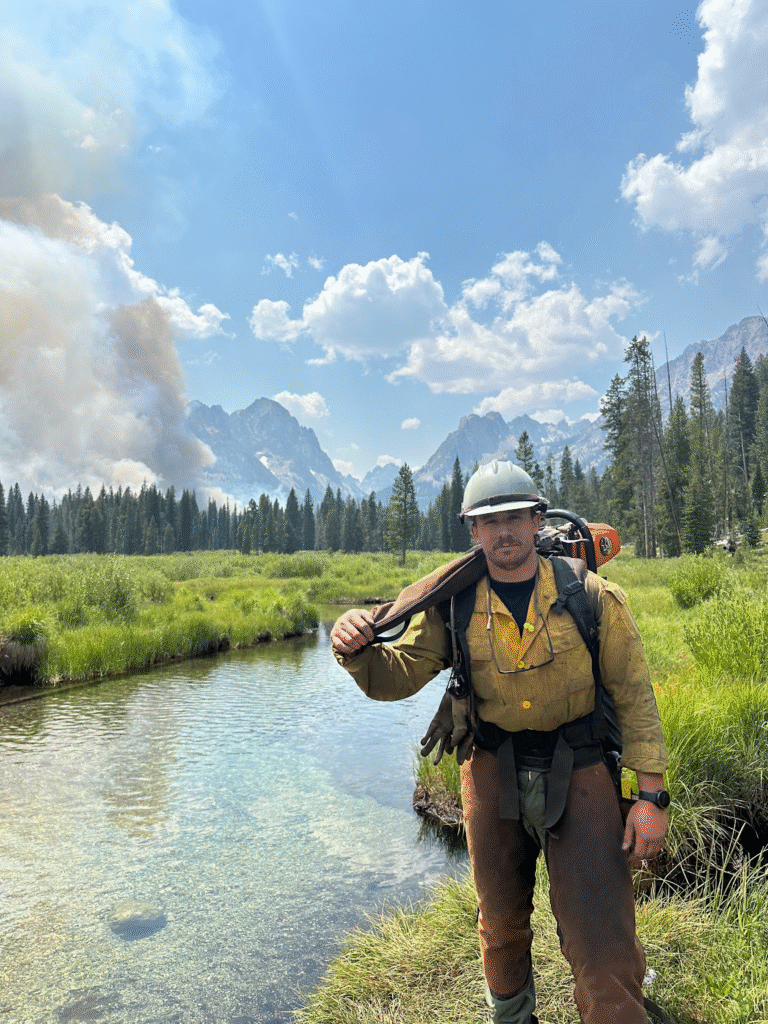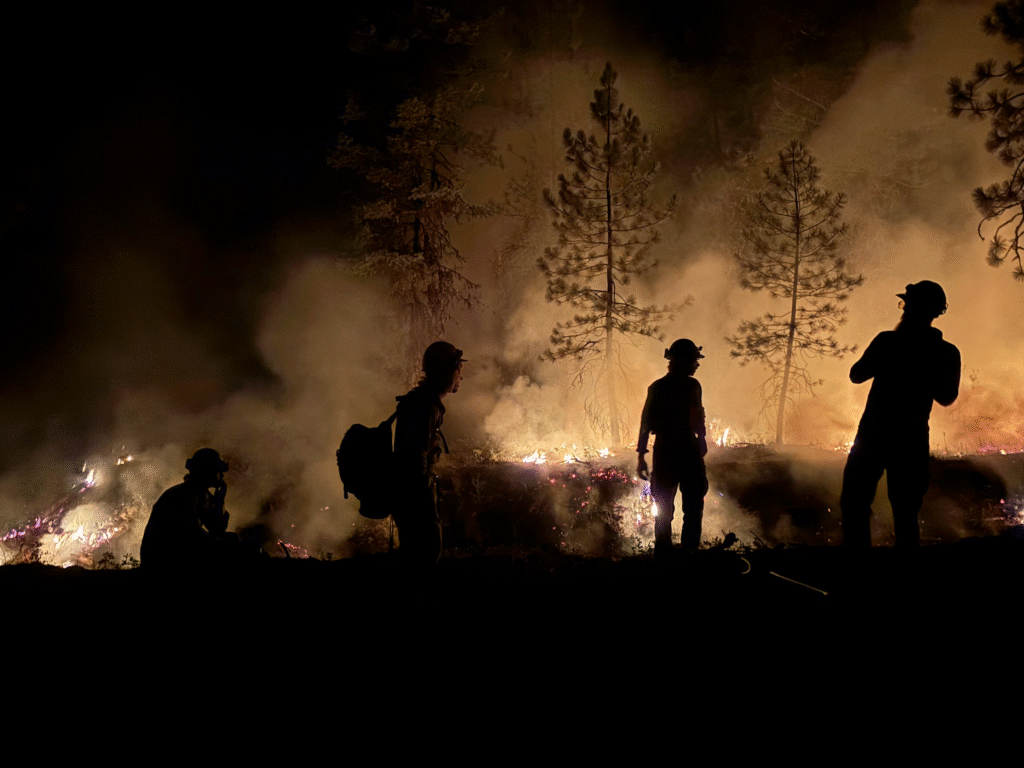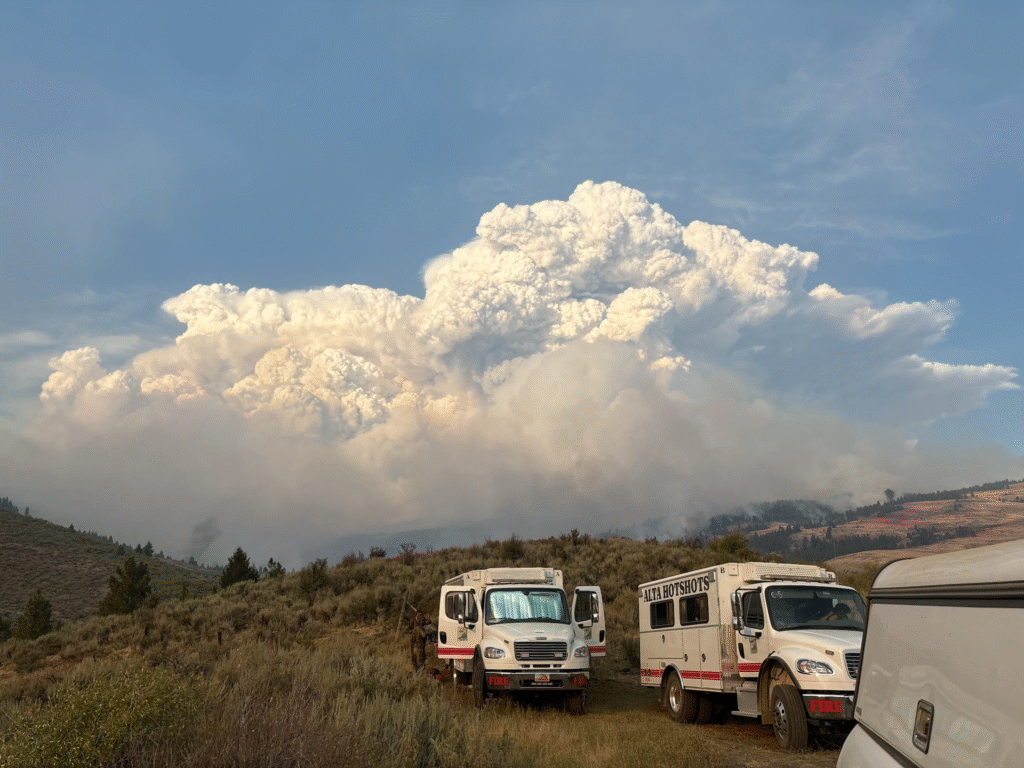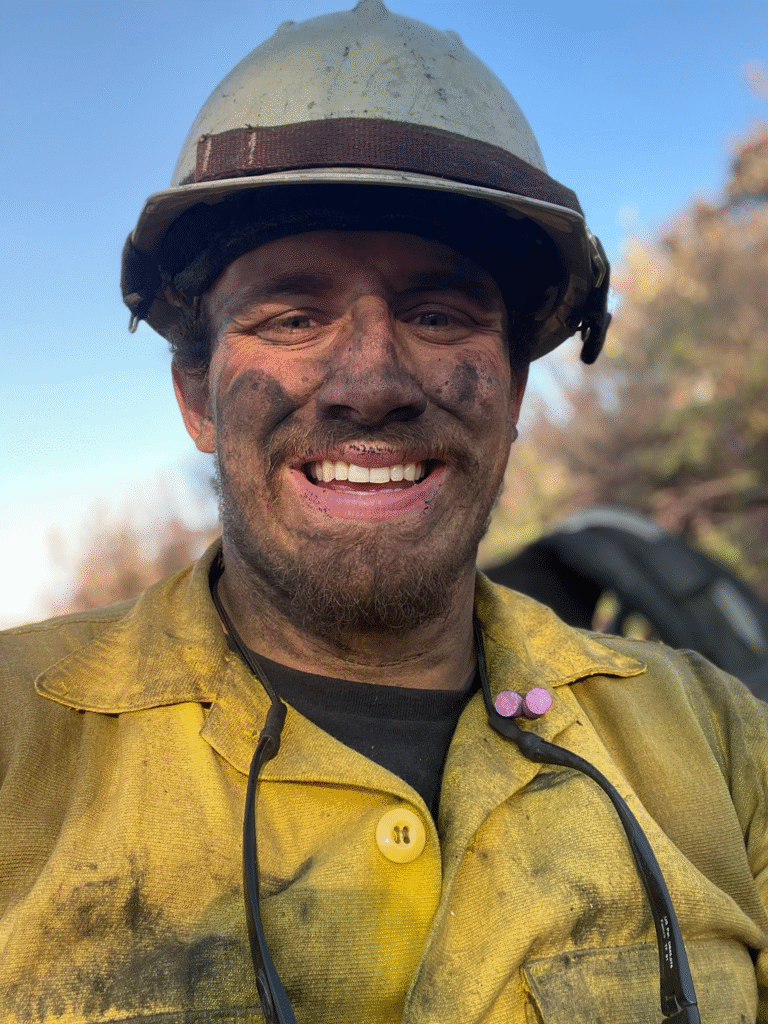To many of us inhabiting the Western half of the US, wildland firefighters are the heroes that put their lives on the line to save our lives, homes, and treasured natural landscapes. Behind the scenes however, researchers put in countless hours trying to understand the factors that contribute to forest fires, and the ecological impact that follows. Laken Alles, a masters student in the department of Fisheries, Wildlife and Conservation Sciences at OSU, has been on the front lines fighting fires and is now researching fire and habitat ecology in the lab of Lisa Ellsworth.

Laken’s work focuses on the Great Basin in Utah, which is also where he spent the majority of his career wildland firefighting. Nowadays Laken is observing how the implementation of different fuel treatments (fuel in this case being any flammable material in the ecosystem) affect future wild fires, as well as how invasive species like cheat grass can take hold in regions after a fire has burned through. Cheat grass is a highly invasive annual grass, and it is causing unprecedented ecological impacts in sagebrush ecosystems. Fire tends to favor cheatgrass over native plant species like sagebrush, so preventing fire-related invasions has been a major focus of cheatgrass mitigation efforts.

Tune in to 88.7FM at 7PM PST on October 5th, 2025 to hear all about the intricacies of wild fires, invasive cheat grass, and how one goes from the fire front lines to modeling fire outcomes. You can also listen live on KBVR’s website or wherever you get podcasts!


For more info about sagebrush restoration visit sagestep.org
Written by Hannah Stuwe
